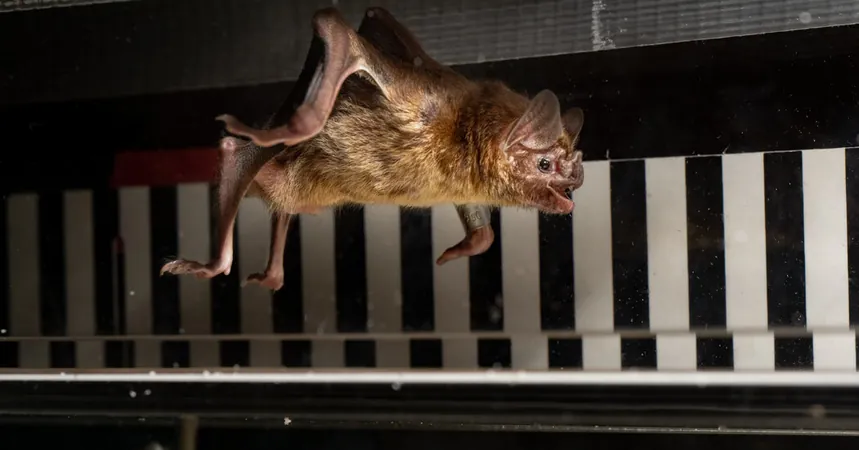
Why You Can’t Keep Up with Vampire Bats: The Shocking Secrets of Their Blood-Driven Speed!
2024-11-08
Author: Yan
Introduction
With their eerie, gargoyle-like features and needle-sharp fangs, vampire bats are the stuff of nightmares. But what's even more terrifying? Their ability to run! Unlike most of their bat cousins, who prefer to soar through the night sky, vampire bats have evolved to become efficient runners, making them successful predators of livestock—and even unsuspecting humans.
Unique Hunting Technique
Vampire bats don’t just drop down onto their prey,” explains Kenneth Welch, a biologist at the University of Toronto Scarborough. "Instead, they land at a safe distance and stealthily approach, making a tiny, painless incision to drink the blood without raising alarm."
Energy-Gaining Adaptations
This unique hunting technique is no small feat; stalking their prey requires significant energy. Bats are relatively small and their diet—consisting only of blood—lacks the carbohydrates and fats that most mammals rely on for energy. So, how do these little bloodsuckers stay sprightly?
Secret Weapon Revealed
A recent paper published in *Biology Letters* reveals that vampire bats have a secret weapon: they can rapidly convert the proteins from their blood meals into energy. Vampire bats are uniquely known for engaging in hematophagy, the practice of feeding exclusively on blood, a solitary trait among mammals. However, many blood-feeders, like tsetse flies, have evolved their methods for energy extraction.
Groundbreaking Study
In a groundbreaking study, Dr. Welch and his colleague, Giulia Rossi—now at McMaster University—collected vampire bats in Belize and fed them enriched cow blood. This treated blood was infused with amino acids, which not only nourished the bats but also enabled scientists to track energy utilization.
Treadmill Experiments
The researchers then placed the vampire bats on a miniature treadmill for a thrilling 90-minute energy test, gradually increasing the speed. Remarkably, the bats quickly adapted: they began to walk, trotted, and eventually bounded at speeds approaching 100 feet per minute! During this process, researchers collected breath samples to analyze oxygen intake and carbon dioxide output.
Astounding Results
The results were astounding—up to 60% of the energy vampire bats expended during their treadmill escapades came from the breakdown of glycine and leucine, the amino acids found in their blood meals. “This rapid conversion of amino acids into energy within minutes is totally unique to these mammals,” shares Michael Hiller, a researcher at the LOEWE Center for Translational Biodiversity Genomics in Frankfurt. This fascinating efficiency represents a rare moment of convergent evolution, where animals with drastically different ancestries developed strikingly similar adaptations to survive on such specialized diets.
Cost of Specialization
But it’s not all advantages—this incredible speed comes at a cost. As vampire bats specialize in metabolizing proteins for energy, they have lost the capacity to process other forms of fuel. This means while they excel in their unique niche, they are vulnerable and dependent on their blood-based diet.
Conclusion
So the next time you hear the flutter of wings in the night, remember the incredible adaptability of vampire bats. With their gruesome charm, these remarkable mammals have unlocked the secrets of survival in a world that often feels beyond their reach. Can you keep up?


 Brasil (PT)
Brasil (PT)
 Canada (EN)
Canada (EN)
 Chile (ES)
Chile (ES)
 España (ES)
España (ES)
 France (FR)
France (FR)
 Hong Kong (EN)
Hong Kong (EN)
 Italia (IT)
Italia (IT)
 日本 (JA)
日本 (JA)
 Magyarország (HU)
Magyarország (HU)
 Norge (NO)
Norge (NO)
 Polska (PL)
Polska (PL)
 Schweiz (DE)
Schweiz (DE)
 Singapore (EN)
Singapore (EN)
 Sverige (SV)
Sverige (SV)
 Suomi (FI)
Suomi (FI)
 Türkiye (TR)
Türkiye (TR)